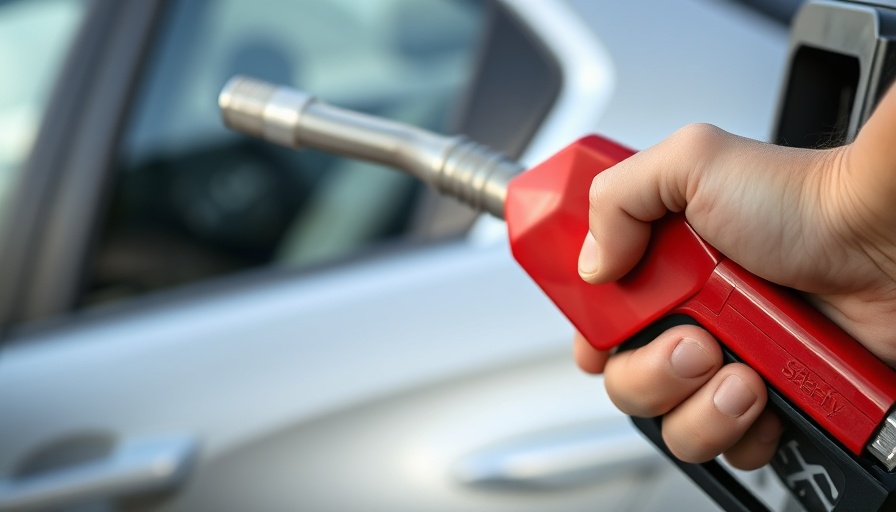
Safety First: Essential Tips for Fueling Your Vehicle
Pumping gas may seem like a mundane chore, yet it can be dangerous if proper precautions aren’t taken. Here are key recommendations to keep in mind to ensure your experience is safe and efficient.
1. Always Turn Off Your Engine
Before you even consider lifting the gas nozzle, make sure your vehicle is in park and the engine is off. While it might be tempting to leave it running for quick access to air conditioning or music, an active engine can create sparks that could ignite gasoline vapors. Ignoring this step is one of the most critical mistakes drivers can make, potentially leading to disastrous consequences.
2. Stay Outside the Vehicle
It’s recommended to resist the urge to jump back into your car while fueling. Static electricity can build up when you get in and out, and discharging that static by handling metal or gas pump components can create a spark, especially in the presence of gasoline vapors. By staying beside your vehicle, you also keep better awareness of your surroundings, which is crucial in busy gas stations.
3. Avoid Distractions: Put Down the Phone
While it’s almost automatic to check notifications or scroll through messages on your phone, using your device while pumping gas can divert your attention. Gas stations often have a lot going on, and it’s important to be alert to potential hazards such as moving vehicles or spills. Instead of focusing on your phone, stay engaged in the task at hand.
4. Trust the Automatic Shut-off
One common mistake is overfilling your gas tank. Most modern fuel tanks come equipped with an automatic shut-off feature that prevents spillage when the tank is full. Ignore your instincts to squeeze in just a little more; overfilling not only wastes fuel but can also lead to spills that contribute to environmental pollution.
5. Mind Your Skin and Eyes
Accidents happen—gasoline can splash onto your skin or into your eyes. If this occurs, wash the affected areas immediately with soap and lukewarm water. In case of contact with eyes, flush them with water for at least 15 minutes and seek medical attention if irritation persists. By taking these precautions, you greatly reduce the risk of health issues caused by gasoline exposure.
6. Keep Your Kids Safe
When fueling, it is advisable to keep children in the car. Children are naturally curious, which can lead to distractions and unsafe situations. If you have to take them out for any reason, ensure they stay away from the pump and vehicle, as equipment and vehicles in or around service stations can present threats to their safety.
7. Properly Handle Fuel Disruptions
If an interruption occurs—like your neighbor needs to fill up or a fuel line blockage—ensure to manage it properly by putting down the nozzle and waiting for the situation to stabilize. Avoid getting flustered, which can lead to mistakes. Remaining calm and collected helps prevent accidents while pumping gas.
8. Fuel Up in Good Weather
While we cannot control the weather, it’s wise to be cautious about fueling during harsh weather conditions. Rain or strong winds can contribute to the risk of static electricity build-up, making it the right time to wait for better conditions. Understanding local weather patterns can help make your fueling tasks safer.
9. Be Aware of Gas Station Guidelines
Each gas station has its own guidelines, usually posted on signage near the pumps. Familiarize yourself with these rules—protocols are generally put in place for a reason, often concerning health and environmental safety. Staying informed means maintaining a respectful and safe experience for all patrons.
10. Report Fuel Spills
If you see a spill, whether it’s excessive runoff from another customer or your own, report it to the store manager immediately. Prompt action can prevent accidents caused by slips or overexposure to fuel vapors.
Encouraging Responsible Fuel Habits
As homeowners and DIY enthusiasts, embracing a safe approach to gas pumping is part of our everyday responsibility. By adopting best practices, we not only protect ourselves but also contribute to a safer community.
Taking proactive measures when performing routine tasks like gas pumping will enhance both personal safety and general awareness for those around you. Next time you pull into the station, remember these essential steps to ensure a safe fueling experience.
For more tips about maintaining your home and personal safety, dive into our site’s other helpful articles!
 Add Row
Add Row  Add
Add 




Write A Comment